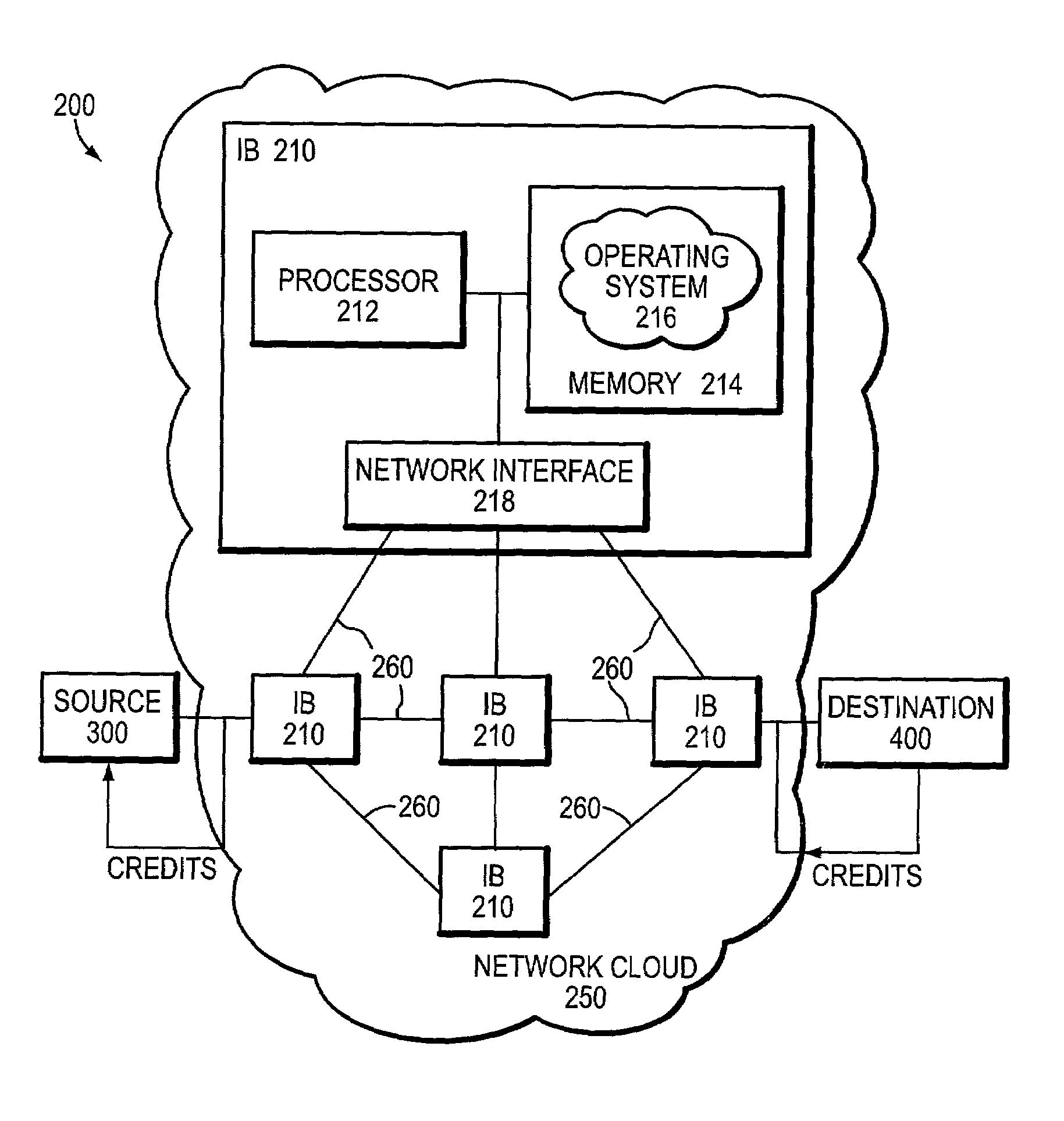Technique for providing end-to-end congestion control with no feedback from a lossless network
a lossless network and congestion control technology, applied in the field of communication networks, can solve the problems of inability to provide end-to-end congestion control
- Summary
- Abstract
- Description
- Claims
- Application Information
AI Technical Summary
Benefits of technology
Problems solved by technology
Method used
Image
Examples
Embodiment Construction
[0033]FIG. 2 is a schematic block diagram of a communications network 200, such as an InfiniBand (IB) communications network, that may be advantageously used with the present invention. The network 200 comprises a source end node (source) 300 and a destination end node (destination) 400 interconnected by a network cloud 250 of communication links 260 coupled to intermediate nodes 210. The links 260 are preferably point-to-point, unidirectional links arranged in a full-duplex communication configuration and capable of accommodating different transfer data rates or speeds. The nodes are computers that may be embodied as servers (end nodes) and / or intermediate nodes (routers or switches).
[0034]Each node, e.g., intermediate node 210, comprises a plurality of interconnected resources, including a processor 212, a memory 214 and an input / output device, such as a network interface 218. The memory 214 may comprise storage locations addressable by the processor and interface for storing soft...
PUM
 Login to View More
Login to View More Abstract
Description
Claims
Application Information
 Login to View More
Login to View More - R&D
- Intellectual Property
- Life Sciences
- Materials
- Tech Scout
- Unparalleled Data Quality
- Higher Quality Content
- 60% Fewer Hallucinations
Browse by: Latest US Patents, China's latest patents, Technical Efficacy Thesaurus, Application Domain, Technology Topic, Popular Technical Reports.
© 2025 PatSnap. All rights reserved.Legal|Privacy policy|Modern Slavery Act Transparency Statement|Sitemap|About US| Contact US: help@patsnap.com



